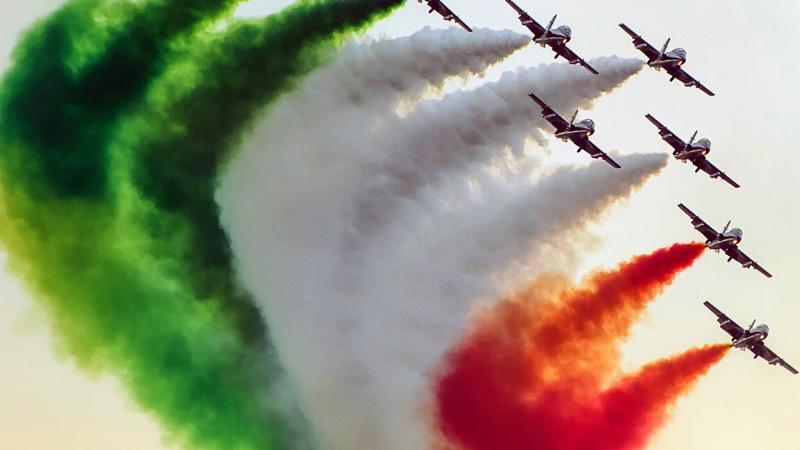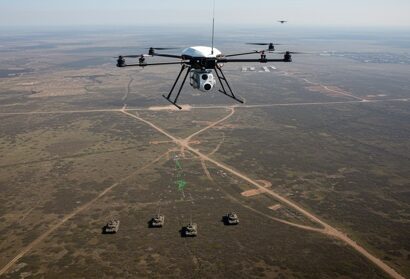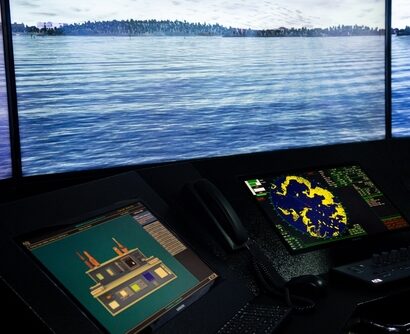Abstract: Although the Indian Armed Forces are considered one of the most capable military forces in the world, most of its inventory is import-dependent. The Government of India has been striving to focus on and attain indigenisation since 1983. The current government is boosting the indigenous defence manufacturing sector under the larger goal of Aatmanirbhar Bharat Abhiyan (Self-Reliant India Campaign) to increase the Indian Air Force (IAF) competency. This paper seeks to evaluate India’s current and future air power capability considering the key security challenges faced by India. The emergence of India as a major regional power and the role of the IAF specifically focuses on the government’s initiatives and the role of IAF to transform and renew the operational capability of IAF by upgrading the push towards indigenisation via modernisation. To this end, the paper projects the IAF’s operational competence and points out and discusses the importance of becoming Aatmanirbhar to deal with key security challenges faced by India on emerging as a major regional power.
Problem statement: How to understand India’s need for modernisation and indigenisation of the defence industrial base in the light of the current security challenges, geopolitical competition, and potential conflict?
Bottom-line-up-front: The IAF needs to be dedicated and focused on addressing both external challenges, including analysing external threats and developments, and internal challenges that inculcate the spirit of research and development and building a skill base. To modernise the Indian fleet and achieve short-run objectives, India might have to import. However, indigenous manufacturing should be promoted to attain long-term benefits and goals.
So what?: While focusing on increasing the number of depleting squadrons, capacity building must be given utmost importance. It will require implementing efficient strategies by the government, IAF, academicians, organisations, and think tanks related to defence, specifically aerospace, to identify the challenges.

Source: shutterstock.com/Valvi N
The Need for Air Superiority
The Indian Air Force, popularly known as IAF, is one of the most capable Air Forces worldwide[1]. The Indian Air Force ( IAF) is a formidable strategic force with highly trained pilots, aircraft, missiles, and air defence systems. It has repeatedly shown its superiority in the various wars fought since independence. To fight and defend against the ever-increasing challenges and threats, the IAF needs to have air superiority, situational awareness, intelligence, and precision-strike weaponry. The IAF must secure a tactical position from which it can deliver an appropriate response to the imminent threats that India currently faces, for example, the border stand-off with China’s People’s Liberation Army (PLA) in eastern Ladakh began in mid-2020. With an assertive China on the continent and in the maritime sphere, distressing Pakistan, and an unstable Afghanistan[2], securing India’s security environment has become a complex endeavour. TheIAF is highly dependent on technology. It requires visionary planning and a road map to become technologically superior to its adversaries. This would require a commitment of national resources and a synergetic approach by all stakeholders – the civil authority, military establishments, defence production agencies, R&D organisations, and academics – to provide genuine inputs regarding increasing the IAF’s capabilities.
Uncertain Geopolitical Scenario
The global geopolitical, military and technological trends are transforming rapidly and have become increasingly unstable and unpredictable, specifically after the Russian invasion of Ukraine. Due to this ongoing conflict, many nations impose sanctions to pressure Russia economically. Leading to supply disruptions faced by the Indian defence sector majorly.1 India must be prepared to face any conflict with its adversaries, from conventional war to nuclear threats. India cannot afford to sit idle as its adversaries are developing and procuring increasingly enhanced military capabilities with sophisticated technologies. The primary objective of the Indian Armed Forces is to acquire tailored military capabilities which suit the challenge that India might face from its immediate neighbours and adversaries. There is a rise in security concerns globally as relationship dynamics between the countries are changing and shaping, keeping their respective advantages and consolidated gains in mind, for example, Russia growing inclination towards China to develop its strategic capability. Furthermore, the disengagement of the USA from Iran has seen Russia and China coming closer to Iran, and the Indian Sub-Continent and Indian Ocean Region are no strangers to it. The territorial disputes and cross-border terrorism challenges have already raised tensions between India and its neighbours on both the eastern and western fronts. Control of Afghanistan by the Taliban is also a rising concern as the lack of influence of India in Afghanistan might see a rise in influence of Pakistan and China in Afghanistan, which might create a problem for India in the form of radicalisation, cross-border terrorism, and trade of drugs and narcotics originating from Afghanistan. Lately, China has been causing much inconvenience for India by attempting to change the status quo along the Line of Actual Control (LAC). Moreover, by providing Pakistan with weapons and technology for its missile and nuclear programme, China has shown that it remains the biggest threat to India[3]. Therefore, it is imperative that India matches the weapon platforms and aircraft capabilities of its potential enemies, accelerate its modernisation, and navigate and maintain a balance between the West and Russia, and China.
There is a rise in security concerns globally as relationship dynamics between the countries are changing and shaping, keeping their respective advantages and consolidated gains in mind, for example, Russia growing inclination towards China to develop its strategic capability.
IAF – A Force to Reckon with
The IAF is fierce, professional, and tactically world-class[4]. The role of the IAF is critical and quite visible in its immediate response to concurring attacks by neighboring states, such as terror attacks in Pulwama and Uri, an army base in Kashmir. It has the scope and potential to pre-empt and counter any adverse situation using its threat perception. Recently, the World Directory of Modern Military Aircraft (WDMMA) released the Global Air Powers Ranking of 2022, ranking IAF as the sixth strongest air force in the world[5]. WDMMA rankings are based on various factors, including the number of aircraft and the current capability of such aircraft. It further includes the equipment that is about to be procured in the near future.
However, India must not get carried away by this ranking and should always strive to grow with each passing moment. The IAF must grow in step with the nation. The transition to strategic capability has been steady. This process must be sustained if India is to effectively influence events that directly impact its sovereignty and geopolitical scenario in the Indian Sub-Continent and Indian Ocean Region. The IAF also needs to strengthen and address the infrastructure deficiencies like depleting the fleet of combat fighter platforms, helicopters, night-vision devices, and other critical defence equipment for maintaining a balance of power. This can be achieved by appropriate joint ventures and tie-ups for the transfer of technology which is currently being done majorly with countries like Russia, Israel, France, and the USA. This can help India to multiply and intensify its efforts to strengthen its domestic defence Industry. Indigenisation of Research & Development, followed by production, will be the key to future capacity building.
To bridge the modernisation backlog, the objective should be to shape and indigenously build fifth-generation multirole combat and swing-role aircraft, Airborne Early Warning and Control Systems (AWACS), and Strategic bombers. This will help in enhancing the operational ability of the IAF. This requires a collective and participative approach of partnerships between the end-users (i.e., IAF, Defence Research and Development Organisation (DRDO), the local industry, government, and foreign vendors). Military and aerospace technology has been evolving swiftly, and often, technology that is yet to be operationalised becomes outdated. Therefore, IAF needs to adapt accordingly and continuously evolve. Thus, utmost importance should be given to indigenously enhancing the capability of combat assets to stay ahead of adversaries. Aatmanirbhar Bharat – Prime Minister Narendra Modi’s clarion call to become self-reliant in today’s unpredictable world – is a step in the right direction. Though no change takes place overnight, pushing towards indigenisation will be very effective in the long run.
Equipping & Modernising the IAF
The IAF operates different types of aircraft fleets of foreign origin, ranging from legacy MiG-21 Bison to state-of-the-art Rafale aircraft. As part of indigenous drive, significance is given to gaining increased self-reliance and meeting sustenance requirements by enlarging the capacity and scope of participation of the Indian defence industry, especially MSMEs[6]. The IAF has identified equipment ranging from aircraft general purpose spares, such as nuts, bolts, cables, gaskets, and springs, to complex high technology spares, such as avionics equipment and aero-engine accessories; indigenous product support can be provided[7]. “Indigenisation of spares for maintenance of aircraft and systems is undertaken through Base Repair Depots (BRDs) of IAF located in various parts of the country and No. 1 Central Indigenisation and Manufacturing Depot (CIMD), Nashik”[8].
The IAF has identified equipment ranging from aircraft general purpose spares, such as nuts, bolts, cables, gaskets, and springs, to complex high technology spares, such as avionics equipment and aero-engine accessories; indigenous product support can be provided.
IAF is sharpening its offensive edge through modernisation and indigenisation of aircraft and other weapons like Tejas light combat aircraft, light combat helicopters, BrahMos, and long-range surface-to-air missiles[9]. However, most of the procurement is in the form of imports from countries like Russia, France, the USA, and Israel. Around 70% of the IAF equipment is of Russian origin. The Sukhoi Su-30 MKI fighters, MiG-29UPG and MiG-21 fighters, and two IL-76 aircraft have been converted to carry AWACS that India has bought from Israel. Mi-17 utility helicopters, the Mi-35 attack helicopters, the Mi-26 heavy-lift helicopters, and the Kamov anti-submarine warfare helicopters, which are part of IAF inventory, are also coming from Russia. Besides that, India also imports Russian missiles such as the R-77, R-37, the R-73 air-to-air missiles, the Kh-59, Kh-35, and the Kh-31 air-to-surface missiles, the KAB laser-guided bombs, which are operated from the Su-30 MKI and the famous S-400 Triumf air defence system.
The procurement of next-generation assets, such as Rafale fighter jets from France, and the integration of weapons on existing and new platforms show the need and inclination of IAF to modernise its inventory. Additionally, the C-295 aircraft deal with Airbus Defence and Space S.A., Spain[10], and procurement of CH 47 F(I)- Chinook heavy-lift helicopters through the US government’s Foreign Military Sales programme are major inductions in the transport fleet[11]. There is significant progress in air defence capabilities with the induction of new radars and the surface-to-air guided weapon (SAGW) system[12]. The induction of S-400, medium-range surface-to-air missiles (MRSAM), very short-range air defence missiles (VSHORADS), and close-in weapon system (CIWS) will facilitate and empower a layered air defence capability. Further, the Centre for Airborne Systems (CABS), DRDO, has initiated the development of airborne early warning and control (AEW&C) Mk II. The MiG-29, Jaguar, Mirage-2000, and Mi-17 helicopters are being upgraded in a phased manner[13]. Lastly, and more importantly, the IAF is swiftly progressing towards complete network-centric operations, which means communicating information and awareness to the person behind the machine to enable effective and efficient use of this information, and is aiming to improve ISR (Intelligence, Surveillance, and Reconnaissance) to meet future challenges. To reduce the reliance on ground control stations, the IAF now has a dedicated satellite GSAT-7A, a communication satellite that will connect IAF assets like planes, airborne early warning control systems, drones, and ground stations. The satellite is expected to enhance IAF operations and give a major push to drones by improving their range and endurance. The IAF had a project called Modernisation of Airfield Infrastructure (MAFI) on the infrastructure front[14]. Thirty of the airfields have been upgraded into all-weather 24×7 flying capabilities.
Lastly, and more importantly, the IAF is swiftly progressing towards complete network-centric operations, which means communicating information and awareness to the person behind the machine to enable effective and efficient use of this information, and is aiming to improve ISR to meet future challenges.
The IAF should also prioritise and necessitate procurement of airborne warning and control system (AWACS) by developing, designing, and producing the best quality AWACS for operational needs, just like the other global military powers. The operational need for additional AWACS was felt during the Balakot strikes and the subsequent aerial skirmish with Pakistani fighters in February 2021. It has been further reinforced by the ongoing military confrontation with China in eastern Ladakh. Currently, the IAF’s consist of three Israeli Phalcon AWACS mounted on IL-76 transport planes[15]. With the potential of 360-degree radar coverage at a 400-km range. India Air Force also has two indigenous ‘Netra’ AEW&C aircraft that can cover 240-degree in a 250-km range[16]. AWACS can detect incoming fighters, cruise missiles, and drones much before ground-based radars, direct friendly fighters during air combat with enemy jets, and keep tabs on enemy troop build-ups and warships. Not just China but even Pakistan is ahead of India in this field.
The IAF further enhances interactions through exercises and joint training with friendly foreign countries, enhancing cooperation and sharing best war practices. Recent exercises in which India participated include the Indo-Russian exercise at Chakalovasky, Russia, in September 2021. The IAF participated in one IL-76 aircraft[17]. Three IAF IL-78 aircraft and five Mirage 2000 aircraft took part in the multilateral exercise ‘Blue Flag’ in Israel in October 21[18]. These IAF aircraft also participated in an exercise with the Egyptian Air Force on their return journey[19].
The IAF has been facing concerns or challenges of depleting squadrons because of the retirement of older aircraft and the slow procurement process. Besides procuring and modernising its fighter aircraft, the IAF requires long-range weapons, including air-to-air missiles and air-launched cruise missiles. Moreover, it is time to initiate measures to build and develop the capability of key technologies, such as directed energy weapons that damage their target with highly focused energy, including lasers, microwaves, particle beams, and sound beams. Therefore, the IAF should prioritize air-to-ground precision weapons and upgrade their aircraft with these cutting-edge technologies.
Modernisation of IAF through Indigenisation
The IAF has a lot on its plate as it must enrich its depleting squadrons and recalibrate its fighter aircraft. However, the IAF needs to focus on developing modern fighter jet engines indigenously to bridge the gap and attain air superiority to ensure the country’s security and territorial integrity and suppress or counter the air defence system of its adversaries whenever needed. Initially, the joint venture and partnership route seemed most appropriate to develop high-end technology because modern engine manufacturing is very complex and expensive. As Indian scientists and local industry gradually work on such technology with foreign collaborators, India will ultimately become capable of manufacturing indigenous jet engines to be deployed on Multirole Fighter aircraft or Swing-Role aircraft. India needs to focus on encouraging research and development as it will bolster India’s path towards building future capabilities.
The IAF needs to focus on developing modern fighter jet engines indigenously to bridge the gap and attain air superiority to ensure the country’s security and territorial integrity and suppress or counter the air defence system of its adversaries whenever needed.
For strategic autonomy, building a strong defence industrial capability is vital. A strong manufacturing defence base with strategic control and leverage is considered a sign of a powerful, independent nation by other countries, including neighbours and immediate adversaries[20]. IAF is well trained and operationally well exposed[21]. IAF has a clear advantage in terms of the number of missions it can launch across the Indian Sub-Continent. Nevertheless, IAF needs to evolve with time, looking at the increasing capability of its adversaries. The IAF needs to be technologically sophisticated, but direct imports burden the exchequer. Therefore, the IAF is endorsing indigenisation, a part of the larger goal of the Aatmanirbhar Bharat Mission. It is necessary to arm Indian troops with emerging best weapon systems equipped with core technologies and competencies. Thus, developing a robust, modern, and capable indigenous aircraft industry is a substantial requirement for India to become Aatmanirbhar Bharat (Self-reliant India). This advanced level of military capability is needed to secure territorial integrity and move towards a prolonged and continuous high-growth course.
Due to engineering requirements and constraints, the aircraft industry, which produces aircraft, space vehicles, aircraft engines, propulsion units, and related parts, is quite complicated regarding the technology required, costs involved, and limited resources available at the disposal of the local manufacturing industry[22]. Due to the high costs and risks involved in aircraft designing and manufacturing, the private sector must be provided with some assurance regarding the policies governing the defence procurement process and ease of doing business while developing such equipment for the IAF. With active participation and involvement of the defence public sector undertakings (DPSUs), private sector, and micro, small & medium enterprises(MSMEs), effectively implementing modern production facilities would be essential to ramp up the delivery of fighter aircraft and other platforms and systems for the IAF. The key to increasing numbers and reducing the modernisation backlog lies in the successful and rapid establishment of a comprehensive aviation ecosystem[23]. Further, India also needs to increase its defence allocations.
Due to the high costs and risks involved in aircraft designing and manufacturing, the private sector must be provided with some assurance regarding the policies governing the defence procurement process and ease of doing business while developing such equipment for the IAF.
Utmost importance must be given to equipment up-gradation as it will play a pivotal role in the outcome of any future skirmish. Delayed procurement processes, a mismatch in the defence industry’s vision of fighter aircraft, the IAF’s current requirements, and a questionable capacity to develop and manufacture homegrown equipment have left the air force shorthanded. If operationally feasible, the IAF should support the national quest for indigenisation. India cannot depend on imports to safeguard its sovereignty because of the current complex geopolitical environment. Recent conflicts, especially in Ukraine, have shown that both defence supplies and commercial contracts will be affected. In an emergency and economic turmoil, India could look at its foreign suppliers helplessly to obtain the equipment necessary to fight the enemy. Therefore, it has become imperative to encourage and empower domestic manufacturers to build a strong and efficient domestic industrial base to prepare the armed forces for future challenges. Having an Aatmanirbhar defence system will create a very positive domino effect. India will see a reduction in fiscal deficit, generate employment, attract the private sector, encourage innovations, improve in-house design capability, foster technology development, and provide a competitive export business for defence products/equipment.
Steps Taken for Aatmanirbhar Bharat in IAF
The Indian government has taken many initiatives to realise the goal of self-reliance in the defence industry. The government aims to increase the indigenous design, development, innovation, and manufacture of defence equipment in the country. This would help reduce the import dependency and boost India’s domestic economy. The Defence Acquisition Procedure 2020 has been revised to bring about reforms in the procurement of defence equipment to favour indigenous products rather than imports from other countries. Further, the procurement of indigenous fighter aircraft LCA Tejas MK-1A for the IAF at the cost of about USD 5.8 billion is a remarkable example of strengthening the IAF and progressing towards the goal of ‘Aatmanirbhar Bharat’ in the field of defence. Tejas MK-1A is a fourth-generation state-of-the-art fighter aircraft designed and developed in India. Hindustan Aeronautics Limited manufactures these aircraft in India itself. The government has notified two Positive Indigenisation Lists, which include the equipment for defence services, which will not be imported beyond the timeline specified by the government. This equipment includes light combat helicopters, transport aircraft, rockets, bombs, and armoured vehicles.
The Defence Acquisition Procedure 2020 has been revised to bring about reforms in the procurement of defence equipment to favour indigenous products rather than imports from other countries.
In line with the government’s push towards Aatmanirbhar Bharat Abhiyaan, the IAF has signed an MoU with the Indian Institute Of Technology–Madras (IIT Madras) for various developmental projects to accelerate IAF’s indigenisation efforts for achieving ‘AatmaNirbhar Bharat’. This collaboration via MoU will help the IAF promote technology development and find indigenous solutions to sustain various weapon systems. IIT Madras will provide consultancy duly supported by research for feasibility studies and prototype development. As part of IAF’s focus on Self-Reliance and the Aatmanirbhar Bharat mission, IAF is giving impetus to fast-tracking indigenisation and enlarging the scope of involvement of Indian aerospace MSMEs. To this end, the IAF has already identified indigenisation requirements of approximately 4000 lines of spare parts. Critical requirements for indigenisation include aviation-grade filters (fuel, hydraulic, and pneumatic), aero-engine bearings, hydraulic and pneumatic hoses, multifunction displays, aviation-grade circuit breakers, lamp filaments, and spark plugs, to name a few. Enormous opportunities are available for India’s aerospace and defence industry partners, including MSMEs, to join with IAF in this vigorous indigenisation drive. IAF is further engaging with the industry to set up repair and overhaul (ROH) facilities within India for high-value rateables/repairables. By achieving this objective, the IAF aims to accrue huge savings to the financial exchequer, in addition to developing and encouraging in-house MRO facilities, thereby leading to reduced timeframes for repair and enhanced operational availability of assets.
Due to Emergent and Evolving Challenges
For a long time, India has been aiming to become self-reliant for its armed forces. As the IAF gets the lion’s share of the defence budget, the IAF must lead the way in reducing the burden on the exchequer and aggressively promoting indigenisation and local industries. This will require encouraging and promoting private sector participation as it has a professional and competitive spirit. There is a need to build the domestic industry’s capacity to meet the emergent and evolving challenges in all the war-fighting domains. To enhance operational capabilities, there is a need to fully equip the IAF with state-of-the-art weapon systems and modern-day effective gears by inducting new platforms. The constant focus should be on upgrading the currently used technology. It will encourage and build the confidence and determination of our soldiers to deter any adversary and prevent the borders from border incursions. Further, research and development in the aerospace industry must be given prime importance to develop the spirit of innovation.
Further assimilation of academia (think tanks) and the manufacturing industry should be encouraged. Initiatives taken by the government under indigenisation, such as an increase in the FDI limit for the defence sector, the decision to set up two defence corridors in Uttar Pradesh and Tamil Nadu, and the notification of positive indigenisation lists by the Ministry of Defence, offer a great opportunity to the Indian defence industry. These steps taken by the government of India are a harbinger of the good times to come ahead. Considering India’s skill and capacity in manufacturing state-of-the-art missiles, satellites, and space vehicles, there is no doubt that the indigenous industry can play a key role in making India an aerospace and defence powerhouse in the coming years.
Miss. Richa Tokas is doing her PhD from the O.P Jindal Global University on “India’s Defence Relationship with Russia and Israel: Indigenisation in Defence Procurement”. She worked as a Research Intern at the Defence Economy and Industry centre, Manohar Parrikar Institute of Defence Studies and Analyses (MP – IDSA), Delhi, for over a year. She has published various commentaries on the indigenisation process that has been emphasized by the armed forces recently. She has also worked as a Research Intern at the UNESCO Mahatma Gandhi Institute of Education for Peace and Sustainable Development, New Delhi. Richa has a Master’s Degree in International Diplomacy, Law, and Business from Jindal School of International Studies, O. P. Jindal Global University, and a B.A. (Hons) in History from Jesus and Mary’s College, University of Delhi. The views contained in this article are the author’s alone.
[1] H. Fali, “Indian Air Force in the 21st Century: Challenges and Opportunities | Manohar Parrikar Institute for Defence Studies and Analyses,” 2008, https://www.idsa.in/jds/2_1_2008_IndianAirForceinthe21stCentury_FHMajor.
[2] Sameer Patil, “Defence Budget 2022-23: Securing India, Pursuing Self-Reliance,” ORF, February 01, 2022, https://www.orfonline.org/expert-speak/defence-budget-2022-23/.
[3] Sushant Singh, “The Challenge of a Two-Front War: India’s China-Pakistan Dilemma • Stimson Center,” Stimson Center, https://www.facebook.com/stimsoncenter/, April 19, 2021, https://www.stimson.org/2021/the-challenge-of-a-two-front-war-indias-china-pakistan-dilemma/.
[4] “Home – Indian Air Force: Touch The Sky With Glory,” n.d. Indian Air Force: Touch The Sky With Glory, last accessed July 11, 2022, https://indianairforce.nic.in/.
[5] “Global Air Powers Ranking,” 2022, WDMMA, 2022, https://www.wdmma.org/ranking.php.
[6] “IAF’S Indigenisation Thrust in Maintenance of Aircraft Fleet,” 2021, Press Information Bureau, Press Information Bureau, February 02, 2021, https://pib.gov.in/Pressreleaseshare.aspx?PRID=1694464.
[7] Idem.
[8] Idem.
[9] “Enhancement of Capacity of Defence Forces,” 2022, Indian Defence Update, February 04, 2022, https://indiandefenceupdate.com/enhancement-of-capacity-of-defence-forces/.
[10] “MoD Signs Contract with Airbus Defence & Space, Spain for Acquisition of 56 C-295MW Transport Aircraft for IAF,” 2021, Press Information Bureau, September 21, 2021, https://pib.gov.in/PressReleasePage.aspx?PRID=1757634.
[11] Huma Siddiqui, “Indian Air Force Gets 15 Deadly and Heavyweight Chinook Helicopters! To Help Operations in the Northeast Region,” The Financial Express, May 27, 2020, https://www.financialexpress.com/defence/indian-air-force-gets-15-deadly-and-heavyweight-chinook-helicopters-to-help-operations-in-the-northeast-region/1972582/.
[12] “Enhancement of Capacity of Defence Forces,” Indian Defence Update, February 04, 2022, https://indiandefenceupdate.com/enhancement-of-capacity-of-defence-forces/.
[13] Rhythm Garg, “The Indigenisation of Indian Defence Sector | Technology Development Fund (TDF),” Home | Technology Development Fund (TDF), July 23, 2021, http://tdf.drdo.gov.in/blog/indigenisation-indian-defence-sector.
[14] “The Big Picture – Need to Modernise Indian Air Force,” 2019, Drishti IAS, August 31, 2019, https://www.drishtiias.com/loksabha-rajyasabha-discussions/the-big-picture-need-to-modernise-indian-air-force.
[15] Rajat Pandit, “India Plans Major Indigenous Project for Six Powerful ‘eyes in the Sky’ AWACS,” The Times of India, December 16, 2020, https://timesofindia.indiatimes.com/india/india-plans-major-indigenous-project-for-six-powerful-eyes-in-the-sky-awacs/articleshow/79766365.cms?utm_source=contentofinterest&utm_medium=text&utm_campaign=cppst&pcode=461.
[16] Idem.
[17] “Year End Review – 2021 of Ministry of Defence,” 2021, Press Information Bureau, December 31, 2021, https://pib.gov.in/PressReleseDetail.aspx?PRID=1786640.
[18] Idem.
[19] Idem.
[20] Dhruva Jaishankar, “THE INDIGENISATION OF INDIA’S DEFENCE INDUSTRY,” Brookings Institution India Center, 2019, https://www.brookings.edu/wp-content/uploads/2019/08/The-Indigenisation-of-India-Defence-Industy-without-cutmar-for-web.pdf.
[21] Air Marshal Anil Chopra, “IAF Well Placed against China’s PLA in the Himalayas with 25 Airfields Capable of Launching Ops,” Firstpost, November 18, 2021, https://www.firstpost.com/india/iaf-well-placed-against-chinas-pla-in-the-himalayas-with-25-airfields-capable-of-launching-ops-10146951.html.
[22] Hugo Del Campo, Giulietta Poltronieri, Alessandro Simoncini, Alfredo Vaghi, and Simone Vesco, “How Industrial and Aerospace and Defense OEMs Can Win the Obsolescence Challenge | McKinsey,” McKinsey & Company, April 14, 2022, https://www.mckinsey.com/industries/aerospace-and-defense/our-insights/how-industrial-and-aerospace-and-defense-oems-can-win-the-obsolescence-challenge.
[23] “Year End Review – 2021 of Ministry of Defence,” Press Information Bureau, PIB Delhi, December 31, 2021, https://pib.gov.in/PressReleasePage.aspx?PRID=1786640.






